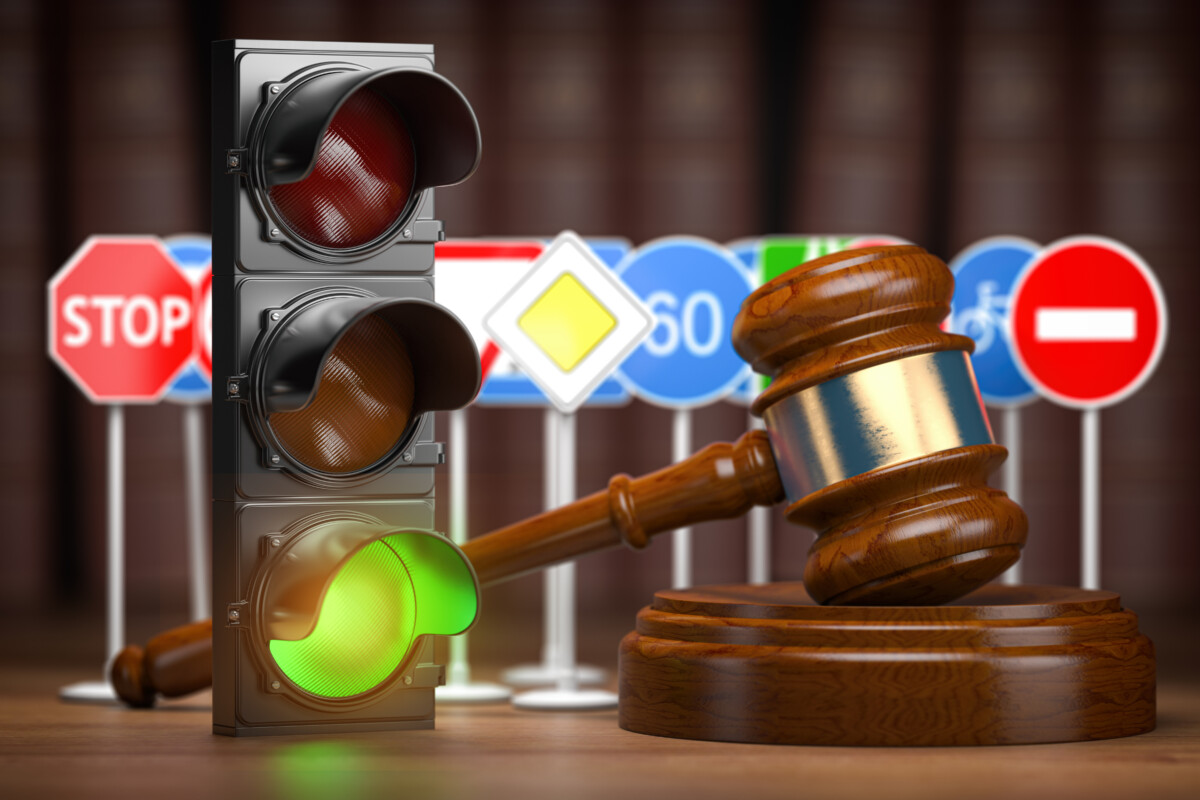Motor Vehicle Accident Claim Process 2026: Avoid Mistakes & Save Time

Navigating the motor vehicle accident claim process 2026 can be overwhelming, especially for first-timers. Understanding this process is essential for anyone involved in a car accident, as it significantly affects your claim’s outcome and financial recovery. With the right knowledge, you can secure adequate compensation for your injuries and damages.
Understanding the Motor Vehicle Accident Claim Process 2026
The Basics of the Motor Vehicle Accident Claim Process 2026
Knowing the steps to take after a motor vehicle accident is crucial. Here are the key stages to protect your rights:
1. Reporting the Accident
- Notify Authorities: Always call the police.
- Document the Scene: Take photos and gather witness information.
2. Gathering Evidence
- Collect Medical Records: Track all treatments and expenses.
- Obtain Repair Estimates: Document vehicle repair costs.
3. Filing Your Claim
- Contact Your Insurance Company: Report the accident promptly.
- Understand Your Policy: Know your coverage limits.
4. Negotiating a Settlement
- Be Prepared to Negotiate: The first offer may not be the best.
- Consider Legal Assistance: A lawyer can help if negotiations stall.
5. Closing the Claim
- Review the Settlement: Ensure it meets your needs.
- Keep Records: Maintain copies of all documents for future reference.
Key Steps in Filing a Motor Vehicle Accident Claim
Navigating the motor vehicle accident claim process 2026 can be challenging, but understanding the steps involved is essential for securing fair compensation for damages and injuries. With proper knowledge and preparation, you can streamline your claim effectively.
Filing a claim involves several crucial steps:
1. Gather Information at the Scene
- Collect Details: Gather names, contact information, and insurance details of all parties involved.
- Document the Scene: Take photos of the accident, vehicle damages, and injuries.
- Witness Statements: Collect contact information and statements from witnesses to support your case.
2. Notify Your Insurance Company
- Report the Accident: Contact your insurer promptly, as there are specific reporting time frames.
- Provide Accurate Information: Be thorough and honest to avoid complications.
3. File the Claim
- Complete Necessary Forms: Fill out and submit forms accurately.
- Include Supporting Documents: Attach police reports and medical records.
4. Follow Up on Your Claim
- Stay in Contact: Regularly check in with your adjuster for updates.
- Be Prepared for Negotiations: Be ready to negotiate settlements based on your evidence.
5. Seek Legal Assistance if Necessary
- Consult an Attorney: If complications arise, legal advice can help you navigate the process effectively.
Common Challenges in the Claim Process
Navigating the motor vehicle accident claim process 2026 can be overwhelming, especially with the rising number of accidents. Understanding the complexities of filing a claim is crucial for victims to recover damages and hold responsible parties accountable. However, several challenges often arise during this process.
Understanding Insurance Policies
- Many individuals lack knowledge about their insurance coverage, leading to confusion during claims.
- Policies vary in terms, limits, and exclusions, impacting claim outcomes.
- Reading and understanding your policy beforehand is essential to avoid surprises.
Nearly 60% of drivers do not fully grasp their insurance policies, complicating the claims process.
Gathering Evidence
- Collecting evidence at the accident scene is often overlooked.
- Key documents include police reports, witness statements, and photos.
- Delays in gathering evidence can weaken your claim.
Claims with comprehensive evidence are 40% more likely to settle favorably, making thorough documentation critical.
Dealing with Insurance Adjusters
- Adjusters may not prioritize your interests and often aim to minimize payouts.
- Effective communication with adjusters is vital for a successful claim.
Research shows that individuals with legal representation receive, on average, 3.5 times more in settlements than those without.
The Role of Insurance Companies in 2026 Claims
Navigating the motor vehicle accident claim process 2026 can be challenging, particularly in understanding the role of insurance companies. These entities significantly influence the speed of claims and the compensation received. In 2026, advancements in technology and regulations are reshaping how insurance companies operate and interact with policyholders.
Insurance companies act as intermediaries between accident victims and their compensation. Their responsibilities include assessing damages and negotiating settlements, which are crucial for claimants to understand for effective navigation of the process.
Claims Assessment
- Investigation: Adjusters conduct investigations, reviewing police reports and interviewing witnesses.
- Damage Evaluation: They assess vehicle damages and medical expenses, establishing the claim’s value. Technology, like AI, is enhancing this process for quicker evaluations.
Negotiation and Settlement
- Initial Offers: Insurance companies often present initial offers that may be lower than deserved, leading to negotiations.
- Counteroffers: Claimants can propose counteroffers based on their assessments. Statistics indicate that about 60% of claimants accept the first offer, potentially missing out on fair compensation. Understanding negotiation is key.
Legal Representation
- When to Hire a Lawyer: If negotiations stall, legal representation may be necessary. Lawyers can provide insights and advocate for claimants. In some cases, litigation may be required for fair compensation.
Statistical Overview of Motor Vehicle Accidents in 2026
Understanding the motor vehicle accident claim process 2026 requires a look at the statistics that shape it. In 2026, the National Highway Traffic Safety Administration (NHTSA) reported a 10% increase in accidents compared to 2025, with urban areas experiencing a 15% rise. Distracted driving accounts for 30% of all accidents, highlighting the need for safe driving practices.
In terms of injuries, approximately 1.5 million were reported, with a fatality rate of 1.4 deaths per 100 million miles driven. Notably, pedestrian and cyclist fatalities surged by 20%.
Economically, the cost of accidents is estimated to exceed $400 billion, leading to an 8% rise in insurance premiums and an average claim payout of around $20,000.
These statistics underscore the complexities of the motor vehicle accident claim process 2026, emphasizing the importance of being prepared and informed about potential financial implications following an accident.
Legal Considerations for Motor Vehicle Accident Claims
Navigating the motor vehicle accident claim process 2026 can be challenging, particularly regarding legal considerations. Understanding your rights and obligations is essential for securing the compensation you deserve. This section explores key legal aspects that can impact your claim, enhancing your confidence in the process.
Understanding Liability in Motor Vehicle Accidents
Liability is crucial in any motor vehicle accident claim, as determining fault significantly influences the outcome.
Key Points to Consider:
- Negligence: Proving negligence is vital, showing that another driver failed to act reasonably.
- Comparative Fault: Both parties may share fault, affecting compensation based on state laws.
- Insurance Policies: Familiarize yourself with relevant insurance policies, as they dictate claim processing and compensation.
Statute of Limitations
Each state has a statute of limitations for filing claims after an accident.
Important Considerations:
- Time Limits: These typically range from one to six years, and missing the deadline can forfeit your claim.
- Exceptions: Certain situations may extend the filing period, so consult a legal professional for guidance.
The Role of Evidence
Collecting evidence is vital for a strong claim.
Types of Evidence to Collect:
- Police Reports: Essential for establishing facts.
- Witness Statements: Valuable insights into the accident.
- Medical Records: Documenting injuries supports your claim.
Seeking Legal Assistance
While you can navigate the claim process independently, legal assistance can be advantageous.
Benefits of Hiring a Lawyer:
- Expertise: Guidance to avoid pitfalls.
- Negotiation Skills: Lawyers can secure higher settlements.
- Peace of Mind: Focus on recovery while your attorney manages your claim.
Future Trends in Motor Vehicle Accident Claims
As we approach 2026, the motor vehicle accident claim process is set to transform significantly due to advancements in technology and regulatory changes. Key innovations like telematics and artificial intelligence will enhance how claims are handled, improving efficiency and the overall experience for claimants and insurers alike.
The Rise of Technology in Claims Processing
Telematics and Data Collection
- Telematics devices will provide real-time data on driving behavior, aiding in fault determination and damage assessment.
- Insurers may offer discounts for safe driving, promoting better habits.
Telematics will enable insurers to gather crucial data, leading to faster claim resolutions and potentially lower premiums for safe drivers.
Artificial Intelligence in Claims Assessment
- AI will analyze accident reports and photos, streamlining claims evaluation.
- Machine learning will predict outcomes based on historical data, while chatbots will assist with initial inquiries.
AI integration will reduce processing times and minimize human error, resulting in fairer outcomes for all parties involved.
Regulatory Changes and Their Impact
New Legislation on Liability and Insurance
- Changes in liability laws will influence claims processing.
- A focus on consumer protection may lead to more favorable outcomes for claimants.
As regulations evolve, insurers must adapt to ensure compliance and maintain customer trust. The future of motor vehicle accident claims looks promising, with a focus on efficiency and transparency.
FAQs: “Motor Vehicle Accident Claim Process 2026”
1. What is a motor vehicle accident claim?
It’s the process of seeking compensation for damages or injuries after a car accident, typically through your insurance company or the at-fault driver’s insurer.
2. How do I start a claim?
Report the accident to your insurance company as soon as possible and provide details like the date, location, and any evidence such as photos or witness statements.
3. What information will my insurer need?
Your insurer will usually ask for your policy details, accident report, medical records, and estimates for vehicle repairs.
4. How long does the process take?
The timeline varies depending on the complexity of the accident and whether fault or injuries are disputed. Simple claims may be resolved in a few weeks; complex cases can take several months.
5. Can I negotiate a settlement?
Yes, you can negotiate with the insurance company or hire an attorney if needed to ensure fair compensation.
Final Thoughts
The motor vehicle accident claim process in 2026 is similar to previous years but may be faster with digital claim submissions and documentation. Acting promptly, keeping thorough records, and understanding your rights can help ensure a smoother and fairer claims experience.
If you’ve been wronged, don’t wait—get a free legal review at LegalCaseReview.com or call 📞 (833) 279-1850 today.


